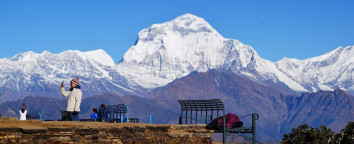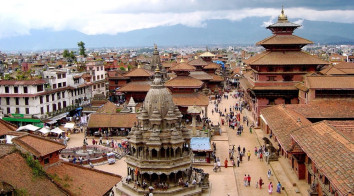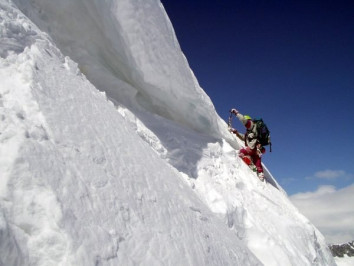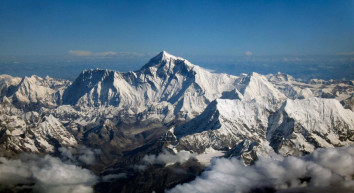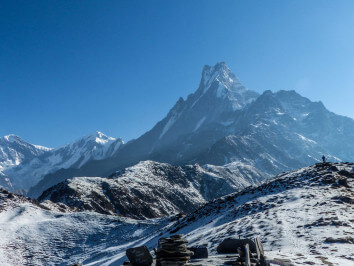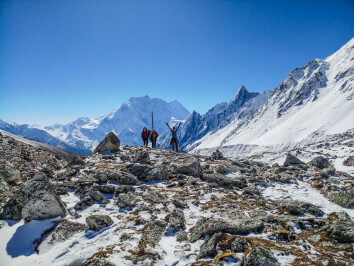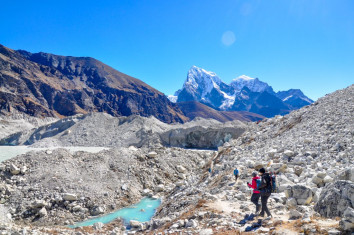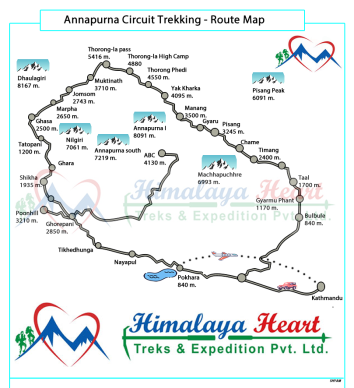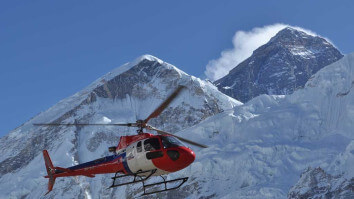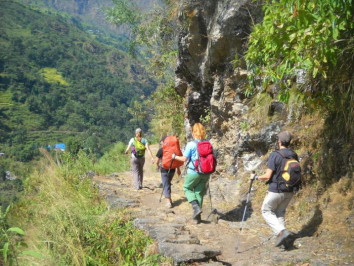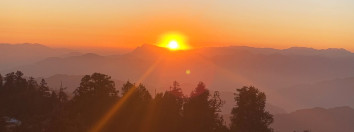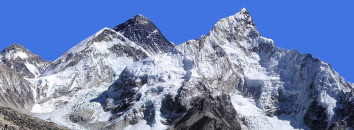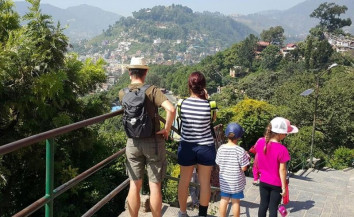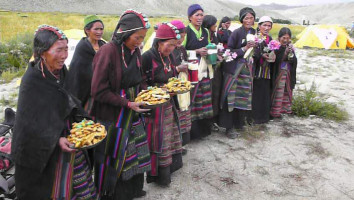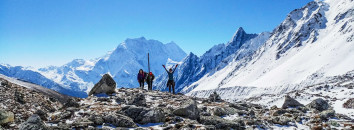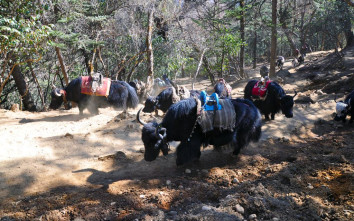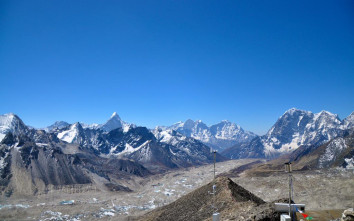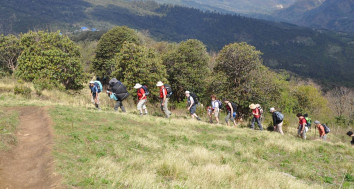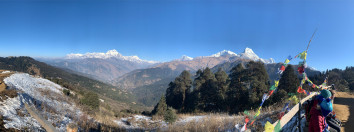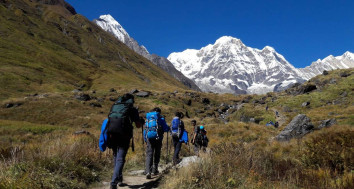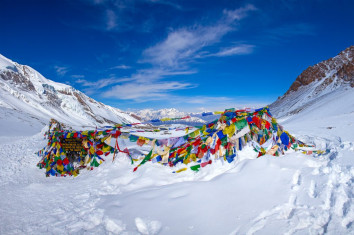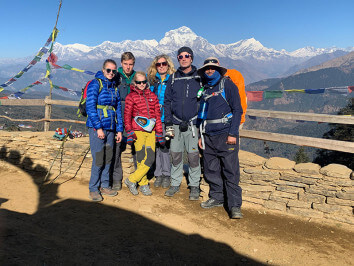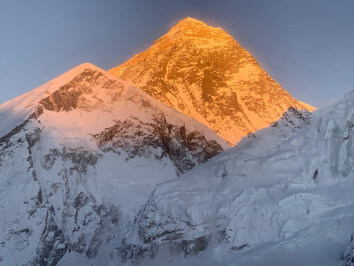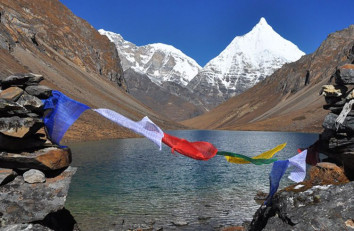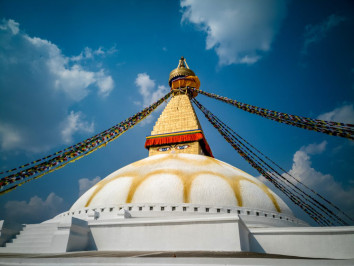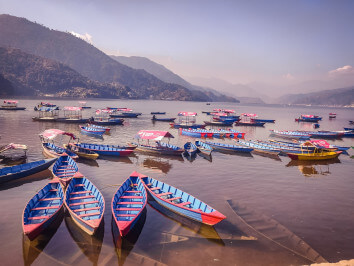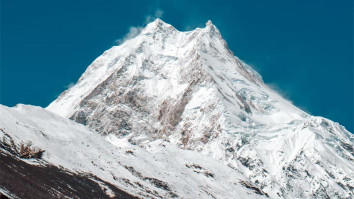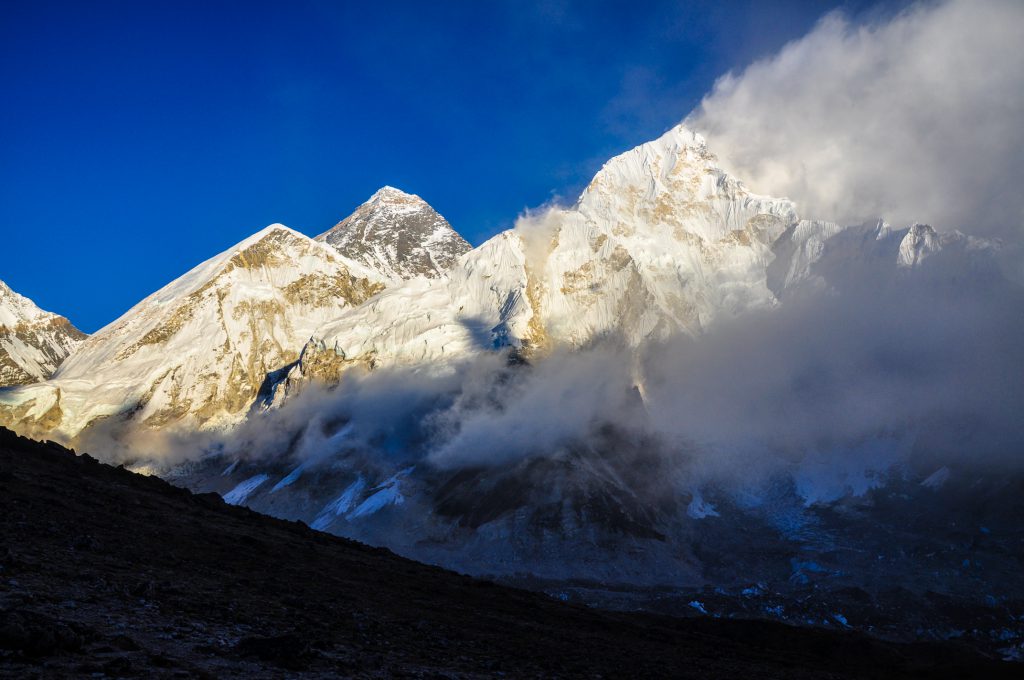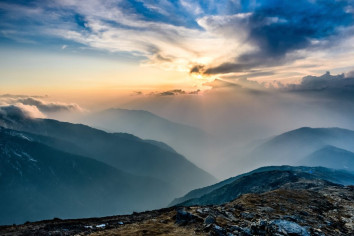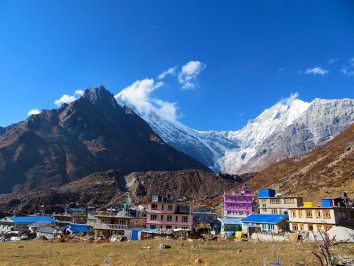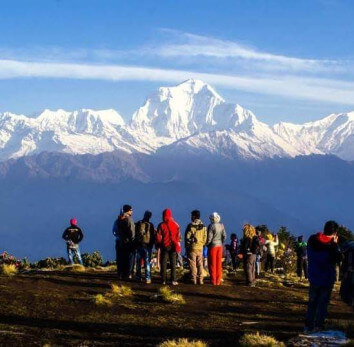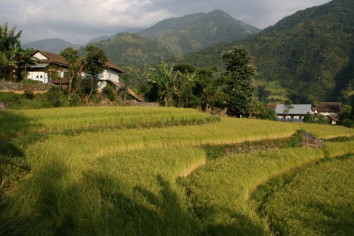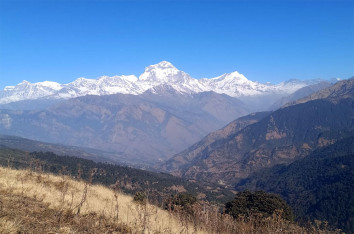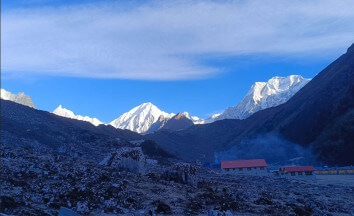11th Apr, 2023
Everest Base Camp Trek In May
- himalayaheart
Embarking on an Everest Base Camp trek in May is an experience that any adventure-seeker should not miss. The month offers mild weather and clear skies, providing stunning views of the surrounding landscape. However, it is essential to plan and prepare for the trek to ensure a safe and enjoyable journey. In this article, we will discuss the details of an Everest Base Camp trek in May, including the weather, difficulty level, accommodation, altitude sickness, and highlights.
Table of Contents
Why Trekking to Everest Base Camp in May?
-
Weather: May is one of the best months for trekking in the Everest region. The weather is generally clear and stable, with relatively warm daytime temperatures and mild nights.
-
Less Crowded: Although May is a popular month, it's not as crowded as the peak season months of October and November. This means you'll have more space on the trails and in the tea houses, and the overall experience will be more peaceful and enjoyable.
-
Spring Blooms: May is also the month when the rhododendron flowers are in full bloom, adding a colorful touch to the landscape. The scenery is stunning with the snow-capped mountains, lush forests, and blooming wildflowers.
-
Accessibility: The trekking trails are usually fully accessible in May, and the risk of flight cancellations due to bad weather is relatively low. This makes it easier to plan and execute your trek.
However, it's worth noting that the weather in the Himalayas can be unpredictable, and conditions can change rapidly. Therefore, it's important to be prepared for all eventualities, including cold temperatures, snow, and rain.
EBC Trekking and Weather in May
May is one of the best months to embark on an Everest Base Camp trek, as the weather is mild and dry, with temperatures ranging from 15°C to 20°C during the day and dropping to around 0°C at night. The skies are clear, offering stunning views of the Himalayan range, including Mount Everest, Lhotse, Nuptse, and Ama Dablam. The weather conditions are ideal for trekking, with minimal rainfall and lower humidity levels than the summer months.
Everest Trekking Difficulty Level:
The Everest Base Camp trek is a challenging journey that requires a good level of fitness and endurance. Trekking at high altitudes can be physically demanding, and it is crucial to prepare yourself before embarking on the journey. The trek covers a distance of approximately 130 kilometers and takes around 12-14 days to complete. The trekking route includes steep ascents and descents, rocky terrain, and narrow paths that require careful navigation.
It is recommended that trekkers engage in regular physical activity in the months leading up to the trek. Activities such as running, hiking, and cycling can help to improve fitness levels and prepare the body for the physical demands of the trek. It is also advisable to undergo a medical check-up before embarking on the journey, to ensure that you are physically fit to trek at high altitudes.
Trekking Accommodation in May
There are plenty of tea houses and lodges along the trekking route that offer comfortable accommodation and delicious local cuisine. The tea houses provide basic amenities such as a bed, blankets, and pillows, while some lodges offer more luxurious amenities such as hot showers and WiFi. It is essential to book accommodation in advance, especially during peak trekking seasons, as the tea houses and lodges can fill up quickly.
While most tea houses and lodges offer communal bathrooms, some do provide private bathrooms for an additional fee. It is advisable to carry a sleeping bag and a warm jacket, as the nights can be cold, especially at higher altitudes. Most tea houses also provide meals, including breakfast, lunch, and dinner. The meals typically consist of local cuisine, such as dal bhat (rice and lentils), momos (dumplings), and thukpa (noodle soup).
Altitude Sickness:
One of the most significant challenges of trekking to Everest Base Camp is the risk of altitude sickness. Altitude sickness can occur when the body is not acclimatized to the high altitude and reduced oxygen levels. The symptoms can include headache, nausea, vomiting, dizziness, and shortness of breath. It is important to take proper precautions to avoid altitude sickness, such as staying hydrated, acclimatizing properly, and taking medication if required. Trekking at a slow and steady pace can also help to prevent altitude sickness.
It is recommended that trekkers spend a couple of days acclimatizing at Namche Bazaar, which is located at an altitude of 3,440 meters. This will give the body time to adjust to the high altitude before continuing the trek. It is also advisable to carry Diamox tablets, which can help to prevent and treat altitude sickness. However, it is essential to consult with a doctor before taking any medication.
Major Highlights of Everest Base Camp Trek
The Everest Base Camp trek offers some of the most breathtaking views of the Himalayas, including Mount Everest, the highest peak in the world. The trek also takes you through quaint villages and beautiful landscapes, giving you a glimpse of the local culture and way of life.
Some of the highlights of the trek include:
-
Namche Bazaar: The gateway to the Everest region, Namche Bazaar is a bustling town located at an altitude of 3,440 meters. The town is a popular stop for trekkers and offers stunning views of Mount Everest and the surrounding peaks.
-
Tengboche Monastery: The Tengboche Monastery is one of the most important monasteries in the region and is located at an altitude of 3,867 meters. The monastery offers stunning views of Mount Everest and is a popular spot for trekkers to take a break and soak in the views.
-
Kala Patthar: Located at an altitude of 5,545 meters, Kala Patthar is a popular vantage point that offers stunning panoramic views of Mount Everest and the surrounding peaks.
-
Everest Base Camp: The ultimate destination of the trek, Everest Base Camp is located at an altitude of 5,364 meters. It is a popular spot for trekkers to take photos and soak in the views of the world's highest peak.
If you are planning to trek to Everest Base Camp Trek in May, here are some essential things to remember:
-
Proper clothing: The weather can be unpredictable in the Himalayas, so it's important to pack warm and waterproof clothing, including a good quality down jacket, thermal base layers, and rain gear.
-
Trekking gear: Invest in a sturdy pair of trekking boots that offer good ankle support and grip. You'll also need a comfortable backpack, trekking poles, and a good quality sleeping bag and mat.
-
Permits: You'll need to obtain two permits to trek to Everest Base Camp: the Sagarmatha National Park permit and the TIMS (Trekkers' Information Management System) card. Make sure to apply for these permits well in advance.
-
Hydration and nutrition: Staying hydrated is crucial at high altitudes, so bring a water bottle and hydration tablets. You'll also need to carry enough snacks and energy bars to fuel your trek.
-
Altitude sickness prevention: Altitude sickness is a common concern when trekking in the Himalayas. Take time to acclimatize by ascending gradually and taking regular rest days. You can also consider taking medication to prevent or alleviate symptoms.
-
Respect local culture: Remember that you are trekking through a region with a rich cultural heritage. Respect local customs and traditions, and be mindful of your impact on the environment.
-
Experienced Guide: Consider hiring an experienced guide who can provide valuable insights into the local culture, ensure your safety, and help you navigate the trek.
Conclusion:
Embarking on an Everest Base Camp trek in May is an adventure of a lifetime. The month offers mild weather, clear skies, and stunning views of the Himalayas. However, it is essential to prepare and plan for the trek to ensure a safe and enjoyable journey. By following the tips and guidelines discussed in this article, you can make the most of your trek and create unforgettable memories that will last a lifetime.
Recent From Blog
